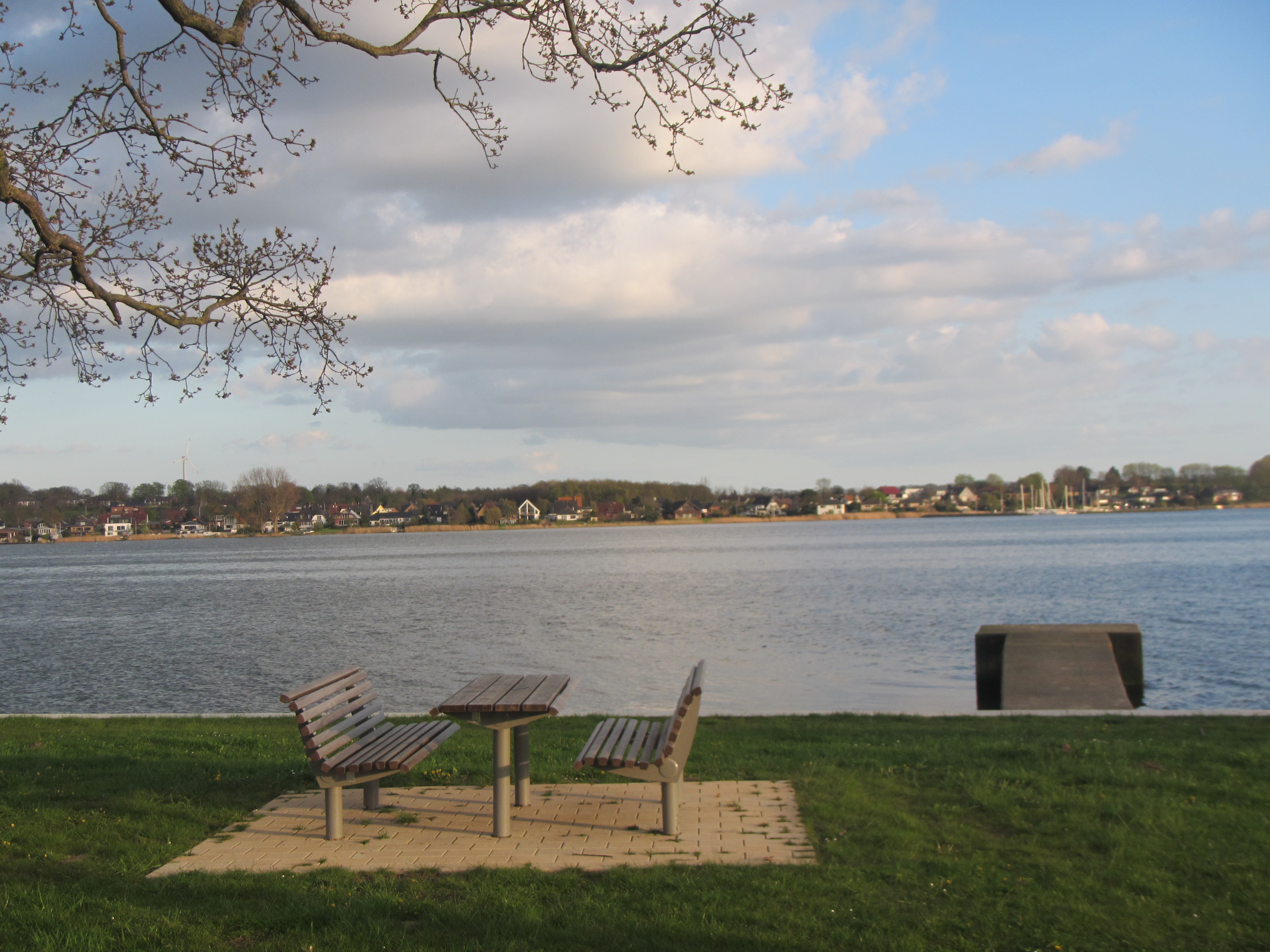
What #wavewatching means to me. My presentation at #sipmanc
Did you miss my talk at the Science in Public conference in Manchester? Well, you are in luck — here it is!
Three years ago, I visited my sister and her then four month old daughter. We spent an evening on the shores of the german river “Schlei”, close to their home. It was a beautiful day — sunny but with some clouds that brought visual interest to the sky — and we were looking at the water and taking pictures. We stood for quite some time in silence, each of us lost in thought, looking out over the river.

My sister and my goddaughter that fateful evening in May 2016
Later that evening, I wrote a blog post about what I had seen [link to that original blogpost!].
The next morning, my sister came into my room, her phone with my blogpost still open in her hand, and asked in a very surprised voice “This is what you saw last night, when I was standing right next to you??? I just watched the sun sparkle on the water!”
I really enjoy watching the sun sparkle on water, too, but nevertheless: That was when I decided that my four-month old niece — or any other child, for that matter — should not grow up deprived of seeing what I saw that evening, in addition, obviously, to what my sister saw. Therefore, I wrote a book as a gift to my niece to her baptism one months after that day, and just like that, #wavewatching was born.
Wave watching, to me, is so much more than just “watching waves”. Wave watching is how I want to live my life, and how I want everybody to approach theirs. Wave watching means a certain way of looking at the world around us.
Here is a picture I took that evening. When you look at that picture, what is it that you notice? The colorful clouds, their reflection on the water?
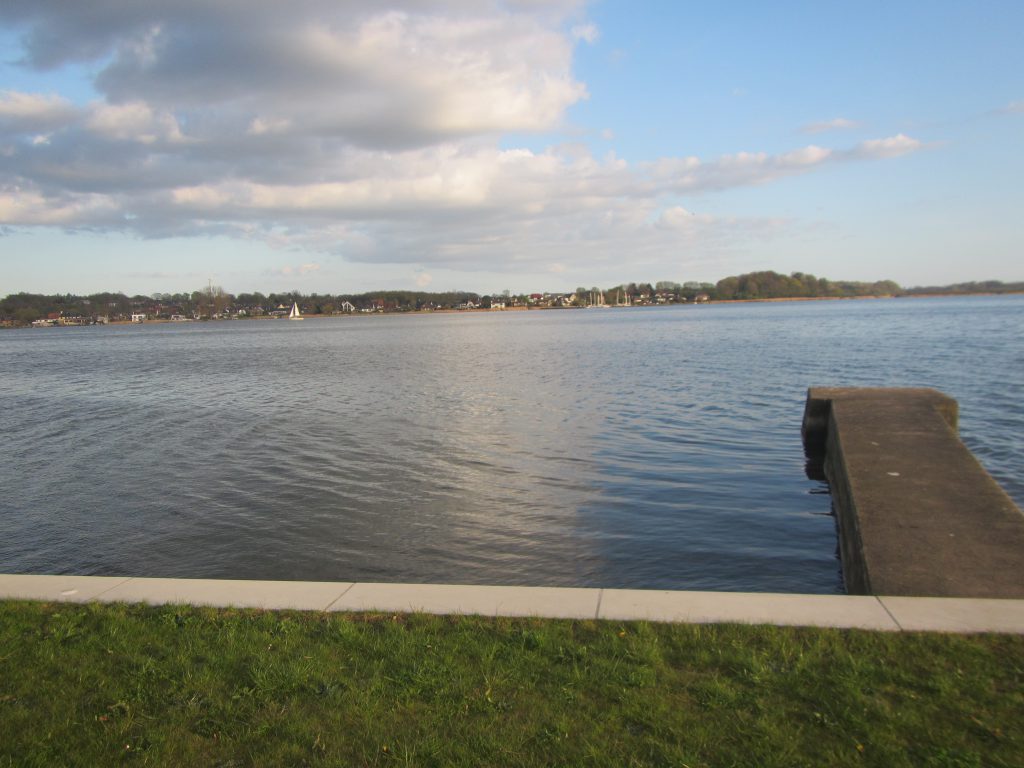
What I notice, and what I want people to notice, is that the waves look very different in different areas of the water.
On the right side, wave crests are more or less straight. That’s where the wind has had a wide and long area over which it has been blowing over the water, a long fetch, creating these waves and driving them down the river. At least until they can’t continue on because there suddenly is a wave breaker in their way.

But if you look here in the foreground, there are waves downwind of the wave breaker, in it’s lee, filling the space behind it. But the waves are not straight any more, they are now curvy.

If we look at a spot on the water slightly to the left of the picture above, what will we see? Keep in mind what the waves, propagating to the left, look like where they hit the shore:

This is what the water looks like just slightly to the left of the picture I showed before.
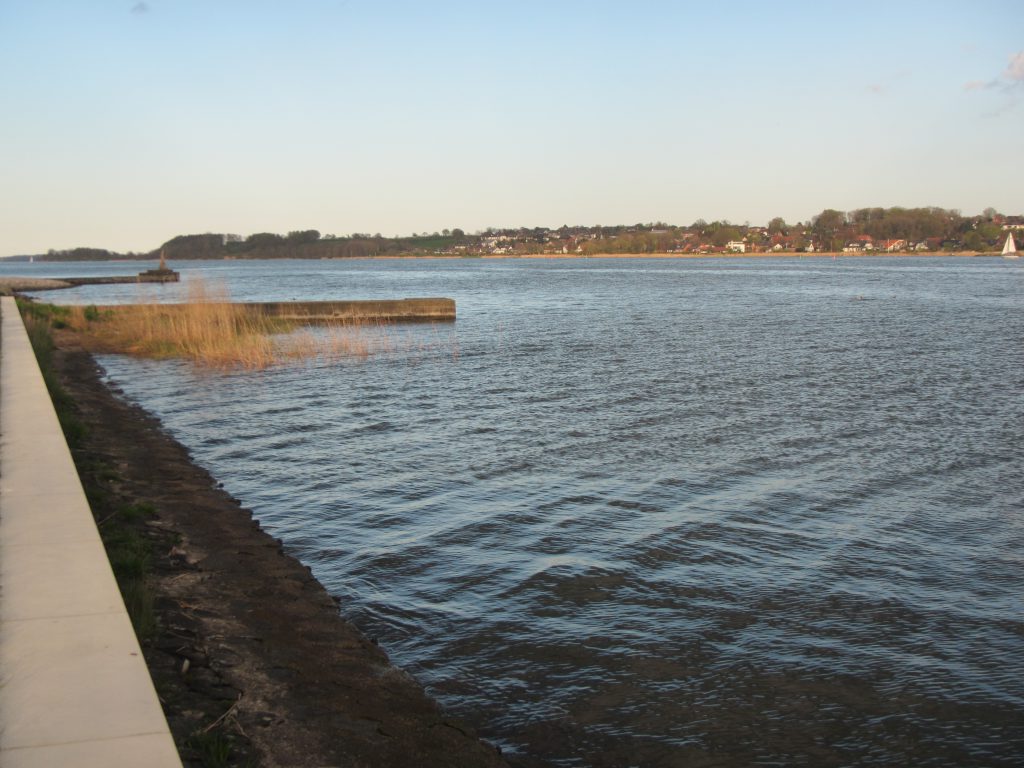
Here we have the same wave crests that were propagating out of the previous frame:
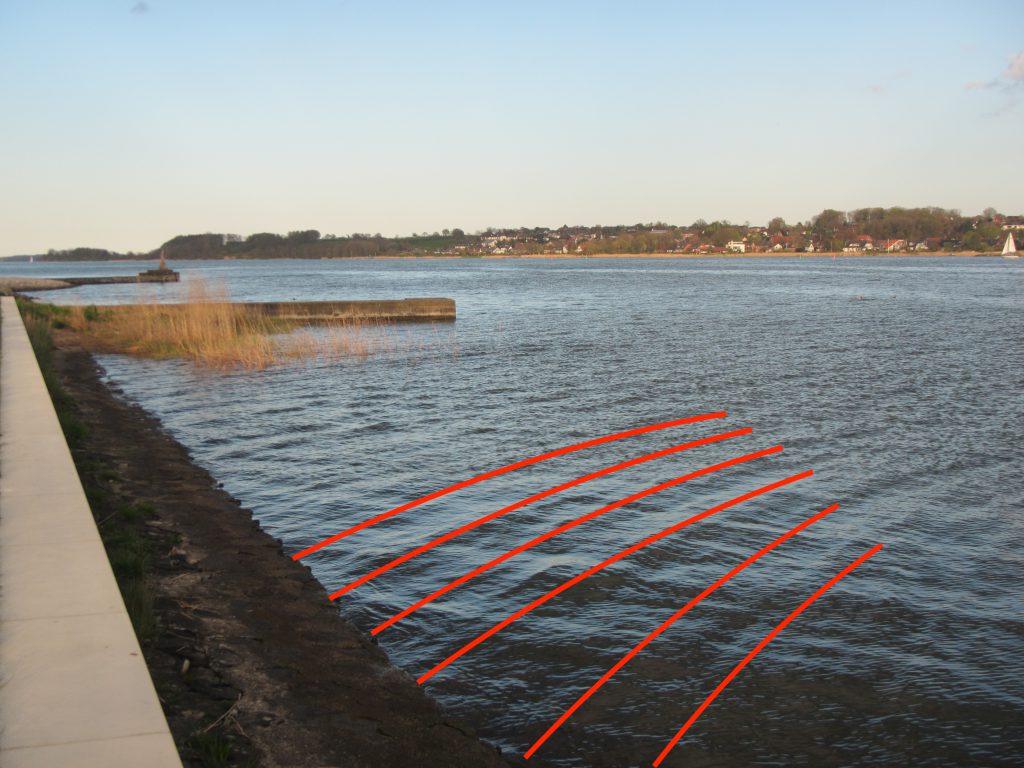
But what we also see is a second set of wave crests at an angle to the first one:
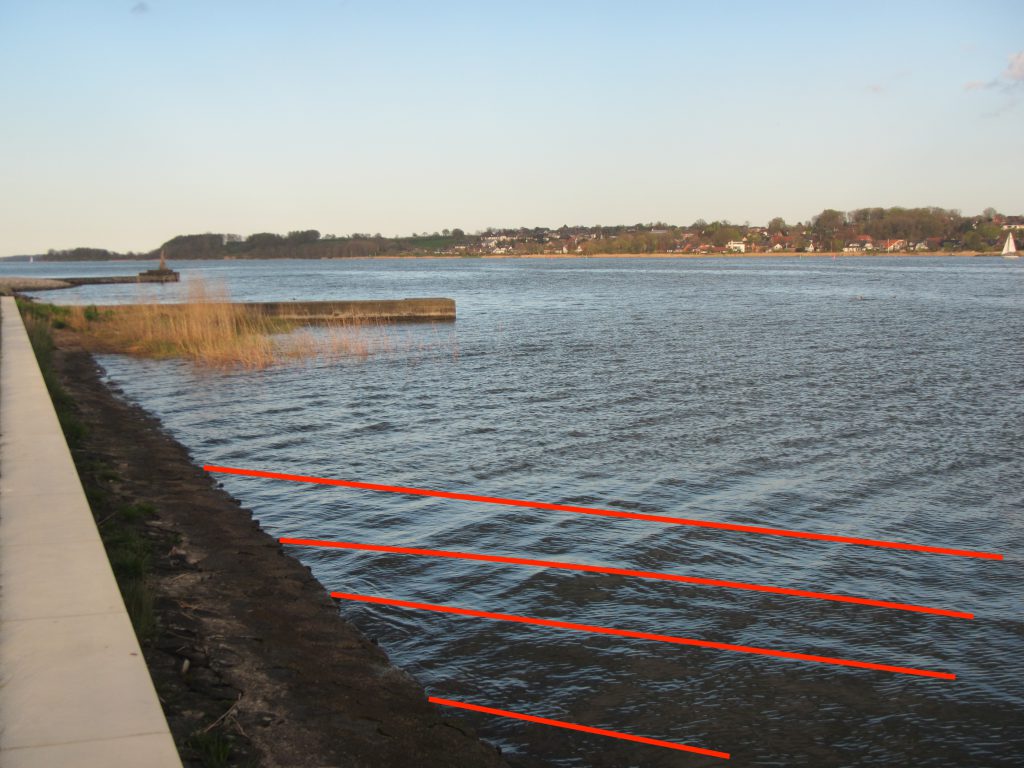
And those are the kinds of things I want you to notice.

I want you to look around, to observe pattern and where pattern break down. And I want you to think about whether you can explain those pattern, and what could help you find explanations.
Quick side note for those of you who have been wondering what exactly is going on here, just to give you some piece of mind: What you saw in the first picture you are probably familiar with from physics classes: It’s a wave showing diffraction at a slit.

Except that in this case, we have a very wide slit and therefore the situation is a little more complicated than in your physics text book.

And in the second picture, we saw very simple reflection, which you are probably again very familiar with.

Only that here we have multiple waves being reflected simultaneously.

But I did not show you this to talk to you about physics today. I am showing you this because this is where I see my place in science communication — in showing people the world the way I see it, but way beyond that: in helping them see the world with different eyes, and in challenging them to do so. And it’s not important whether people observe waves or anything else specific, it’s the general approach to the world that I find so important.
I am sure that next time you look at water — be it when walking around puddles on the side walk, or when looking at water going down the drain when washing your hands — you will look at water differently, and you will notice waves in a way you have not done before. And you will think about why there are these waves, why they look that way, and you will — whether you want it or not — be thinking about physics. And I hope that you will be wave watching with as much awe and wonder, curiosity and joy as me, my goddaughter and her younger sister do!
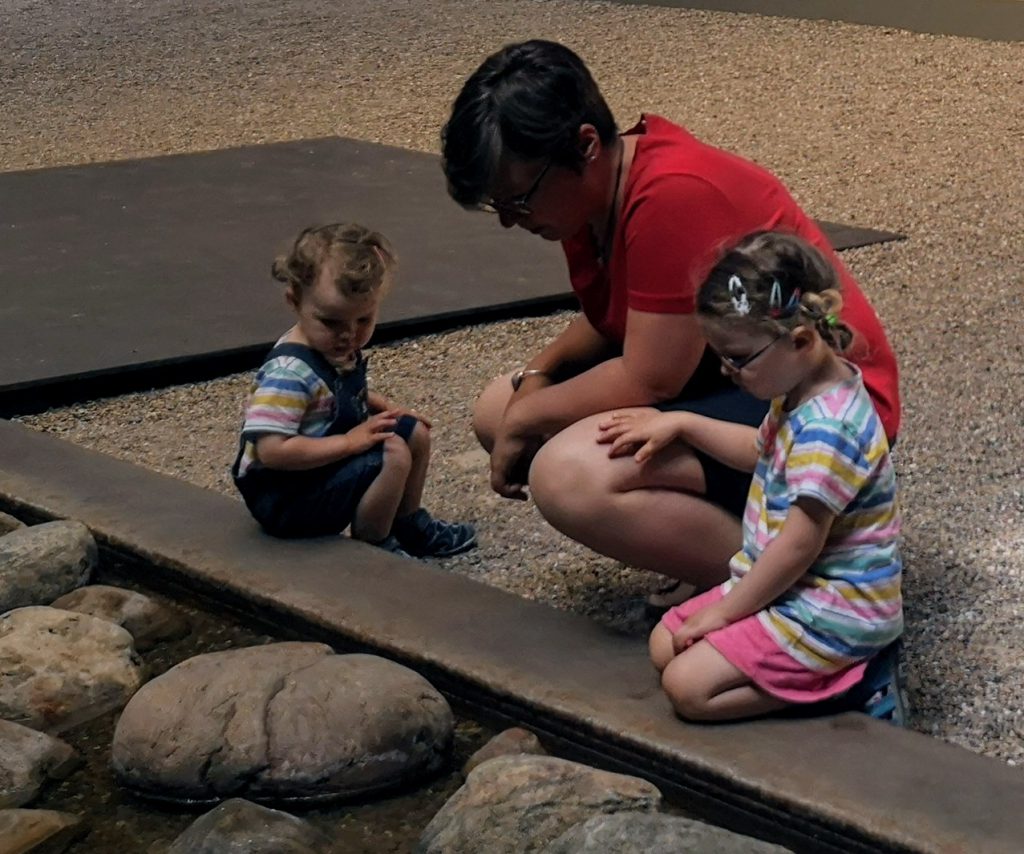
Me, my goddaughter and her younger sister in June 2019
If you are curious about the other two hashtags I had in the original title of my talk, just check out the hashtags on twitter; I put up posts on my blog (on #kitchenoceanography and #dropphotography). Or come and talk to me, or shoot me a message!
AND WHAT I FORGOT? TO PLUG #FRIENDLYWAVES! #friendlywaves is the hashtag people can use to send me pictures of waves that they took, and I will try to explain what’s going on on their pictures. So send me all your wave pictures and I will do my best! :-)
Edit on July 13th: Thank you everybody for you amazing comments about my presentation on Twitter and in person. It feels truly heart-warming to look through all of this! I arrived knowing only one person but left with many new friends. Thank you! (Collected tweets here)
Approach your career as if you were growing a tree, not building a house - Adventures in Oceanography and Teaching says:
[…] Intro to wave watching […]
March's #SciCommChall: My personal branding statement - Adventures in Oceanography and Teaching says:
[…] Intro to wave watching […]
Using campsites for scicomm - Dr. Mirjam S. Glessmer says:
[…] summer at the Science in Public conference in Manchester, I heard a talk by Anna Woolman on science communication in campsites. It stuck with me as a really […]
A #friendlywaves from Tampa, Florida | Dr. Mirjam S. Glessmer says:
[…] who might be new to my blog because of yesterday’s presentation at #SiPManc — please don’t be scared and run away, this is the most complicated #friendlywaves I […]